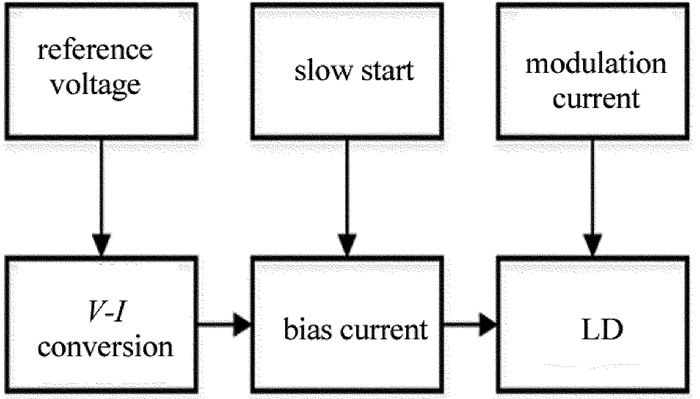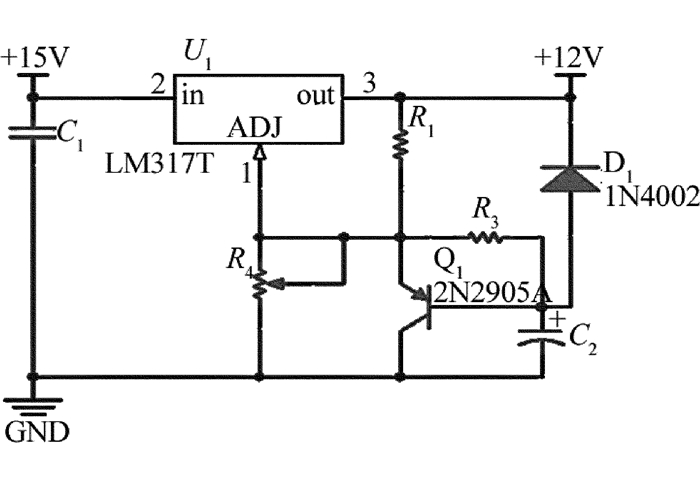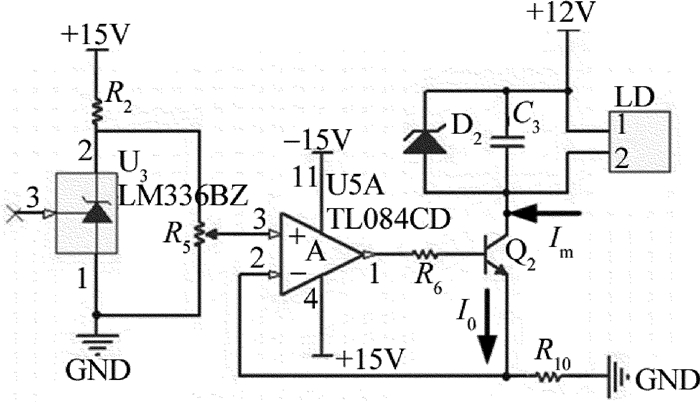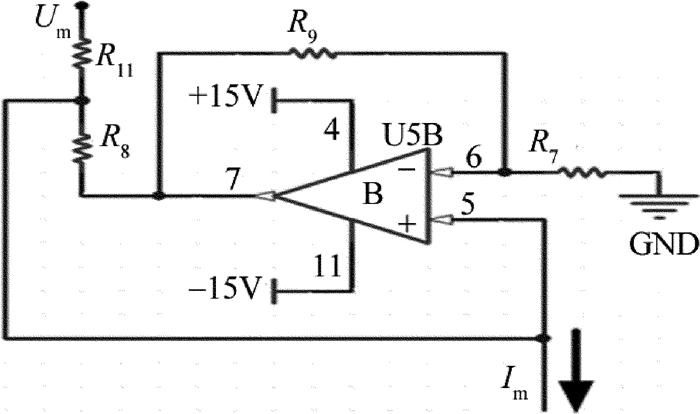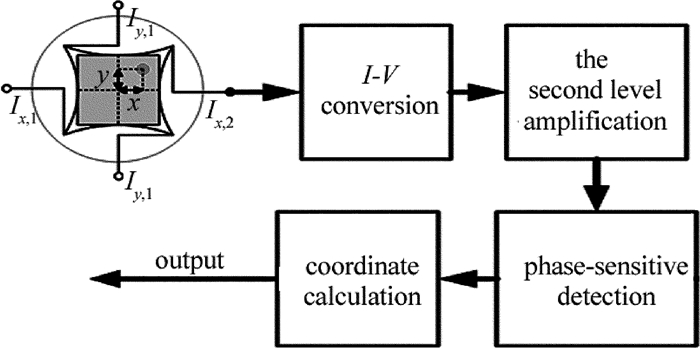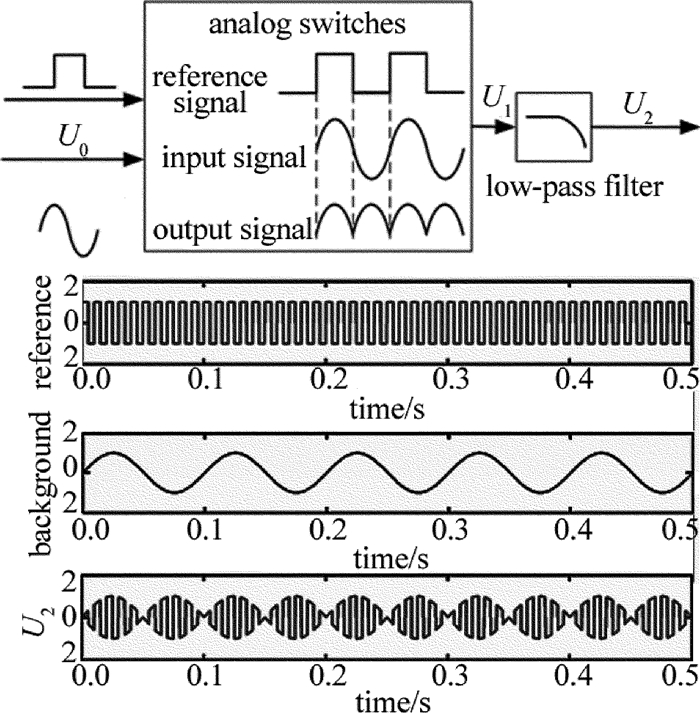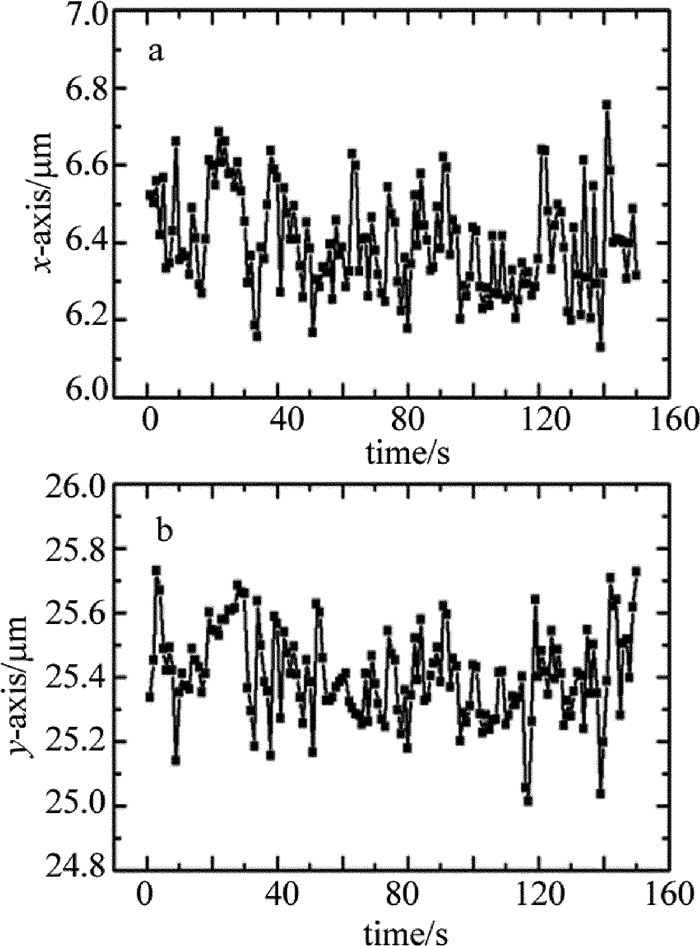Displacement measurement system based on phase-sensitive detection and position sensitive detector
-
摘要: 为了实现对微小位移的测量,研制了一套基于单模光纤输出半导体激光器和2维位置敏感探测器的位移检测系统,可以有效地抑制环境光噪声。对半导体激光器的注入电流进行1kHz的调制,实现输出光功率的调制。在信号处理电路中,采用相敏检波技术,解调探测器的输出交流信号,得出光斑能量中心位置,消除外界干扰。结果表明,测量精度优于1μm。这一结果对于多自由度误差检测是有帮助的。Abstract: In order to realize the measurement of micro displacement, a displacement detection system based on semiconductor laser with single mode optical fiber output and 2-D position sensitive detector(PSD) was developed to suppress ambient light noise effectively. The output power of laser was sinusoidally changed when injection current was modulated with 1kHz. The desired signals from PSD which is illuminated by the modulated light source are demodulated from the noise with phase-sensitive detection technique. In the signal processing circuit, using phase sensitive detection technology, the output alternating current signal of detector was demodulated and spot energy center position was gotten. Therefore, the disturbance of background light was eliminated. The results show that the measuring accuracy is better than 1μm. The study is helpful for multi-degree-of-freedom errors measurement.
-
-
[1] DUAN J, SUN X, CAI J H, et al. Applications research to PSD in the laser displacement detecting system[J]. Infrared and Laser Engineering, 2007, 36(s1):281-284(in Chinese). http://www.wanfangdata.com.cn/details/detail.do?_type=perio&id=hwyjggc2007z1155
[2] LIU J Y, YANG J Q, DONG D F. Application and research of laser tracker's optoelectronic aiming technology based on PSD[J]. Instrument Technique and Sensor, 2015(7):98-100(in Chinese). http://en.cnki.com.cn/Article_en/CJFDTotal-YBJS201507029.htm
[3] YU L, WANG F M. One dimension PSD and applications to precision measurement[J]. Modern Electronics Technique, 2007, 30(7):143-144(in Chinese). http://www.wanfangdata.com.cn/details/detail.do?_type=perio&id=xddzjs200707050
[4] YANG S L, SU Y B, HE J T, et al. Study of measurement accuracy of position sensitive detectors[J]. Laser Technology, 2014, 38(6):830-834(in Chinese). http://www.en.cnki.com.cn/Article_en/CJFDTOTAL-JGJS201406023.htm
[5] SONG D Y, LIU T G, DING X K, et al. Precise PSD micro-displacement online measurement system[J]. Journal of Tianjin University, 2013, 46(2):168-173(in Chinese). http://d.old.wanfangdata.com.cn/Periodical/tianjdxxb201302013
[6] CHEN J H, ZHANG J M, LÜ Y P. Design of position detector for alignment laser line based on the PSD[J]. Measurement & Control Technology, 2012, 31(10):8-11(in Chinese). http://www.wanfangdata.com.cn/details/detail.do?_type=perio&id=ckjs201210003
[7] LIU C Q, SONG Q, SUN Z W, et al. A new PSD-based method for measuring four-degree-of-freedom of long linear guide rails[J]. Optical Instruments, 2013, 35(6):26-30(in Chinese). http://www.wanfangdata.com.cn/details/detail.do?_type=perio&id=gxyq201306006
[8] YUAN H X, LÜ A M, HE A Zh. Position error analysis of PSD irradiated under steady background light[J]. Journal of Transducer Technology, 1998, 17(5):33-36(in Chinese). http://www.wanfangdata.com.cn/details/detail.do?_type=perio&id=QK199800001704
[9] LÜ A M, YUAN H X, HE A Zh. Experimental study of the effect of light source on position precision of PSD[J]. Laser Technology, 2000, 24(3):192-194(in Chinese). http://en.cnki.com.cn/Article_en/CJFDTOTAL-JGJS200003017.htm
[10] FAN Z G, ZHANG F S, ZUO B J, et al. Effect of noise ray on properties of position sensitive detector[J]. Laser Technology, 2004, 28(4):442-444(in Chinese). http://www.wanfangdata.com.cn/details/detail.do?_type=perio&id=jgjs200404023
[11] WANG G Zh, DING H S, DING H. Light disturbance to position sensitive detectors-pattern and methods to overcome it[J]. Journal of Tsinghua University(Science and Technology Edition), 1997, 37(1):61-64(in Chinese). http://en.cnki.com.cn/Article_en/CJFDTOTAL-QHXB701.014.htm
[12] LI L, MU X Y. A novel method to eliminate the disturbance of background light for PSD[J]. Transducer and Microsystem Techno-logies, 2006, 25(9):15-19(in Chinese). http://www.wanfangdata.com.cn/details/detail.do?_type=perio&id=cgqjs200609005
[13] MO Ch T, CHEN C Z, ZHANG L L, et al. Study on background light compensation of photo-electric position sensitive detector[J]. Chinese Journal of Lasers, 2004, 31(4):427-431(in Chinese). http://www.wanfangdata.com.cn/details/detail.do?_type=perio&id=zgjg200404010
[14] LI J L, LAN X Y, CHEN H Y, et al. Design of current supply for high power laser diode[J]. Laser & Infrared, 2014, 44(3):309-312(in Chinese). http://en.cnki.com.cn/Article_en/CJFDTotal-JGHW201403020.htm
[15] LIBBRECHT K G, HALL J L. A low-noise high-speed diode laser current controller[J]. Review of Scientific Instruments, 1993, 64(8):2133-2135. DOI: 10.1063/1.1143949
[16] ERICKSON C J, ZIJLL M V, DOERMANN G, et al. An ultrahigh stability, low-noise laser current driver with digital control[J]. Review of Scientific Instruments, 2008, 79(7):073107. DOI: 10.1063/1.2953597



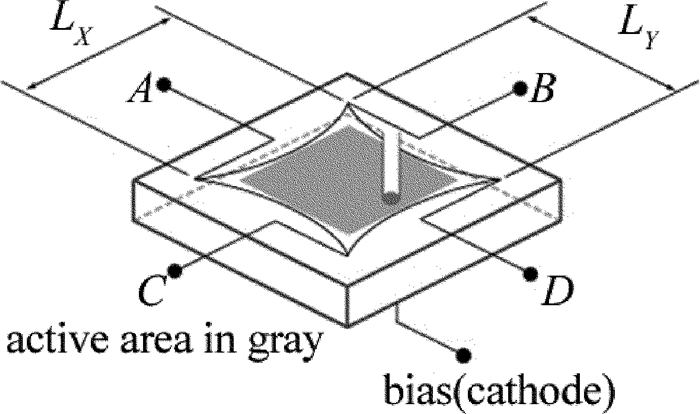
 下载:
下载:
